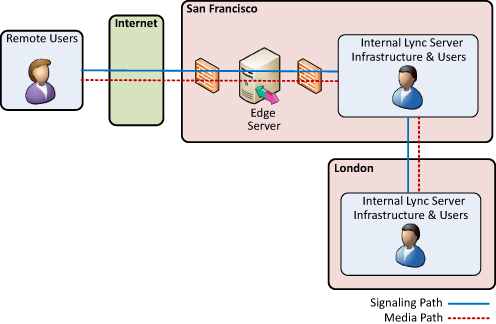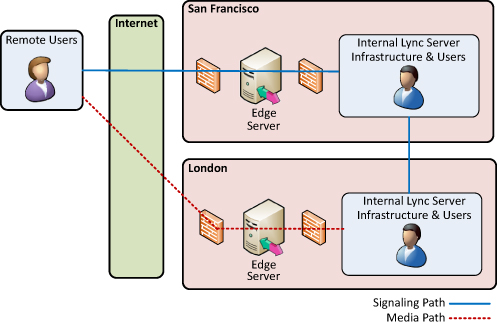- Title Page
- Copyright Page
- Dedication
- Contents at a Glance
- Table of Contents
- About the Authors
- Acknowledgments
- We Want to Hear from You!
- Reader Services
- Introduction
- Part I. Overview
- Chapter 1. What Is Microsoft Lync Server?
- Chapter 2. What Is New in Microsoft Lync Server?
- Introducing New Management Tools
- Topology Changes
- New Enterprise Voice Features
- New Call Management Features
- Integrated Mediation Server
- New Presence Features
- New Conferencing Features
- DNS Load Balancing
- Survivable Branch Appliances
- Operating System Support
- New Lync Client Features
- Client Appearance
- The “Me” Area
- Enhanced Contacts
- Privacy Relationships
- Integration with Office and Windows 7
- Whiteboarding and Application Sharing
- Improved Meeting Join Experience
- Conferencing Attendant and Scheduling
- PSTN Dial-In Conferencing Improvements
- Video Improvements
- Manager/Admin Improvements
- Improved Phone Experience
- Summary
- Chapter 3. Feature Overview of Microsoft Lync Server
- Chapter 4. Benefits of Microsoft Lync Server 2010
- Part II. Microsoft Lync Server 2010 Server Roles
- Chapter 5. Microsoft Lync Server 2010 Front End
- Chapter 6. Microsoft Lync Server 2010 Edge
- Chapter 7. Microsoft Lync Server 2010 Monitoring
- Overview
- Installation
- Configuration
- Administration
- Troubleshooting
- Best Practices
- Summary
- Chapter 9. Director
- Part III. External Dependencies
- Chapter 10. Dependent Services
- Chapter 11. SQL
- Chapter 12. Firewall and Security Requirements
- Part IV. Administration and Management
- Chapter 13. Monitoring Microsoft Lync Server 2010
- Overview
- OpsMgr Lync Server 2010 Monitoring
- What Is New in OpsMgr R2?
- How OpsMgr Works
- OpsMgr Architecture
- How to Use OpsMgr
- OpsMgr Component Requirements
- Advanced OpsMgr Concepts
- Understanding OpsMgr Deployment Scenarios
- Multiple Configuration Groups
- Deploying Geographic-Based Configuration Groups
- Deploying Political or Security-Based Configuration Groups
- Sizing the OpsMgr Database
- Defining Capacity Limits
- Defining System Redundancy
- Monitoring Nondomain Member Considerations
- Securing OpsMgr
- Installing Operations Manager 2007 R2
- Installing Edge Component Monitoring Certificates
- Installing the Lync Server 2010 Management Pack
- Best Practices
- Summary
- Chapter 14. Backup and Restore of Microsoft Lync Server 2010
- Chapter 15. Administration of Microsoft Lync Server 2010
- Chapter 13. Monitoring Microsoft Lync Server 2010
- Part V. Migrating from Older Versions
- Part VI. Voice
- Chapter 17. PBX Integration
- Chapter 18. Enterprise Voice
- Chapter 19. Audio Conferencing
- Part VII. Integration with Other Applications
- Chapter 20. Exchange 2010 and SharePoint 2010 Integration
- Overview
- Exchange 2010 Unified Messaging
- Call Answering Rules
- Exchange 2010 Unified Messaging Architecture
- Unified Messaging Users
- UM Web Services
- Supported IP/VoIP Hardware
- Unified Messaging Protocols
- Unified Messaging Installation
- Postinstall Configuration
- Data Storage in Unified Messaging
- Exchange 2010 Outlook Web Application
- SharePoint 2010 Integration
- Best Practices
- Chapter 21. UCMA
- Chapter 20. Exchange 2010 and SharePoint 2010 Integration
- Part VIII. Clients
- Chapter 22. Microsoft Communicator Client for Macintosh
- Chapter 23. Windows, Browser, and Silverlight Clients
- Chapter 24. UC Endpoints
- Part IX. Planning for Deployment
- Chapter 25. Virtualization
- Chapter 26. Planning for Internal Non-Voice Deployment
- Chapter 27. Planning for Deploying External Services
- Chapter 28. Planning for Voice Deployment
- Index
Edge Placement
,Edge Server placement is critical in a deployment to optimize media paths. The SIP signaling used for presence and IM is more tolerant of slight delays, but web conferencing and A/V traffic are sensitive to latency, so it is important to properly plan Edge Server placement.
Tip
As a rule of thumb, Edge Servers are generally deployed in any location with a Front-End pool that supports remote conferencing or A/V features.
For example, consider a small deployment for Company ABC, as shown in Figure 27.1 where a single Front-End Server in San Francisco exists. In this deployment, only a single Edge Server is necessary to support all the remote features. Media paths are all local to San Francisco.
Figure 27.1 Single Edge Server

Imagine Company ABC expands with a new office in London with a WAN link back to San Francisco and adds a new Front-End pool for the London users. The London users have been assigned policies that allow remote access, but no conferencing or A/V traffic. In this case, the single Edge Server in San Francisco can still support the London Front-End pool. The SIP signaling enters the San Francisco Edge Server, uses the San Francisco Front-End as next hop, and then communicates with the London Front-End Server. London users have full remote access presence and IM capabilities.
Now consider that Company ABC wants to allow London users to conduct conferences with A/V remotely. There is the potential for users in London who must use the San Francisco A/V Edge Server to relay media traffic. This is inefficient and can result in a poor experience for the remote London users because of the latency involved with each packet traversing to San Francisco and back. There can be a London user on the Internet trying to do an A/V call with another London user who is internal, but the media traffic flows all the way back to the San Francisco Edge Server just to reach the internal London user. Figure 27.2 shows how inefficient this media path can be.
Figure 27.2 Single Edge Server with Multiple Sites

The solution in this scenario is to also deploy an Edge Server in London so that users there have a local point to relay media when remote. The SIP signaling still travels through the San Francisco Access Edge Server, but media traffic is much improved. If Company ABC deploys an Edge Server in London, the traffic flow shown in Figure 27.2 changes to the traffic flow shown in Figure 27.3. In this case, the remote users can exchange media traffic with London users directly across the Internet.
Figure 27.3 Multiple Edge Servers

Tip
It isn’t necessary to deploy Edge Servers in every location with a Front-End pool, but it generally results in an improved experience for the end users. Many deployments try to distribute Edge Servers to service distinct geographical boundaries such as opposite coasts or continents to limit traversing long WAN links. For example, using separate Edge servers in North America, Europe, and Asia is a common deployment model.
-
No Comment
